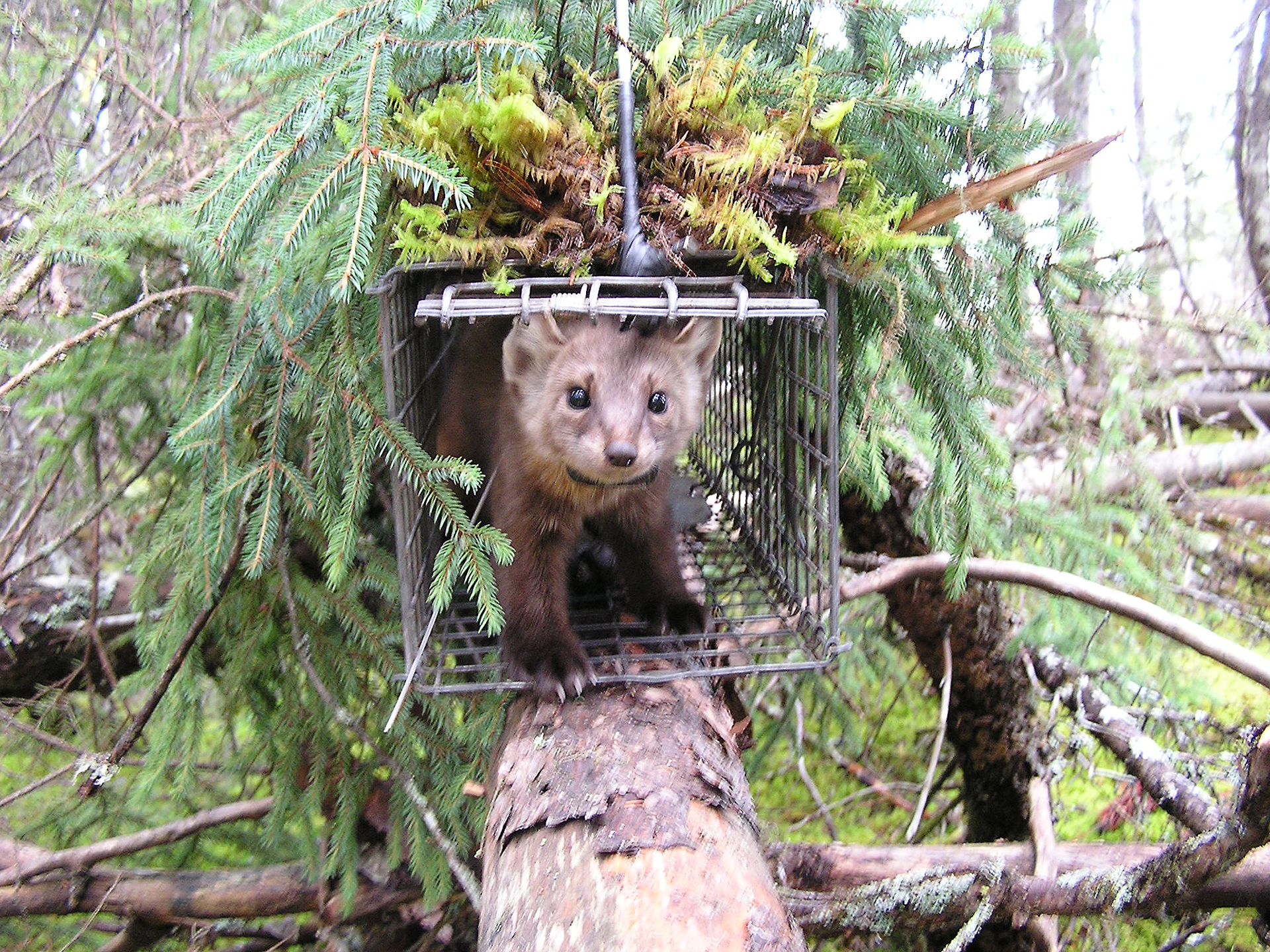TRAP TYPES

Setting a rotating jaw killing trap for muskrat. Photo: Gaetan Fournier
All traps used in Canada for the capture of wild furbearers fall into two broad categories: killing traps and restraining traps. Within these categories, there are different designs depending on the species being targetted, and where and when the trap will be set.
All traps are required to meet rigorous standards of animal welfare, as well as be efficient and safe to operate. For most species, the traps used must be legally certified as complying with the Agreement on International Humane Trapping Standards. 95% of the animals trapped for the fur trade are caught in killing trap systems.
KILLING TRAPS
Killing traps, or lethal traps, are designed to kill a targetted species very quickly.
For small and medium-sized animals, like muskrat, weasel, beaver, marten and fisher, body-gripping traps are commonly used. These work much like a mousetrap, but are larger and more powerful, coming in different sizes and designs depending on the target species.
In Canada for larger species, such as coyote, fox, bobcat and lynx, commercial fur trappers normally use killing neck snares. These are especially preferred in northern regions with extreme environmental conditions (in particular snow and frost) that limit the use of restraining traps such as footholds.
DIFFERENT SPECIES, DIFFERENT SETS
Furbearer species come in all sizes, behave differently, and occupy different habitats, so no one type of trap or set works for all species in all situations.
Some traps are designed for one particular species, while others can be used for a range of similar species, or even quite different ones. For example, the same size of body-gripping trap may be used for raccoon, marten, fisher and muskrat. But they become species-specific by setting them in a particular way, considering such variables as placement, what bait or lure to use, and timing.
For example, a body-gripping trap for marten would be set in a box placed on a tree or inclined pole above the ground. The same trap could be used to catch muskrat, but would be placed underwater at the entrance to a burrow.
SEE ALSO: Best trapping practices, July 2018
RESTRAINING TRAPS

Photo: Fur Institute of Canada
Restraining traps are designed either to hold an animal by a limb, or to confine it in a cage or box, until the trapper arrives. They are used in a variety of circumstances.
Restraining traps are used by wildlife managers to catch and release animals unharmed. They do this for several reasons, such as attaching radio collars to track animals’ movements, or relocating them as part of a reintroduction program.
Restraining traps are also used for catching nuisance animals in settings where killing traps would pose an unacceptable risk to humans and pets. For example, raccoons nesting in urban homes are typically caught in cage traps.
As for commercial fur trappers, there are a range of situations in which they may use a restraining trap rather than a killing trap. For example, species like coyote and wolf are too wary for killing traps other than neck snares. A trapper may therefore use a foothold trap to hold the animal until he arrives to dispatch it, generally with a small-caliber firearm.
Restraining traps also guarantee a fur trapper will not harvest a non-targetted species. For example, a box trap set on a tree limb may attract several species of mustelid, but if a non-targetted species wanders in, the trapper can simply let it go.
NON-TARGET CATCHES
An important benefit of designing and setting killing traps for specific species is that it almost eliminates accidental catches of non-target species. However, these catches do happen occasionally, and they are taken very seriously by the trapping community because they almost always involve pet dogs.
The vast majority of trap sets are perfectly safe for dogs. For example, a foothold restraining trap can simply be removed, while a killing set in a tree is inaccessible, even if the dog is attracted by the smell of the bait.
On the rare occasion when a pet dog is killed in a trap, it almost always involves a neck snare set for canids or felines, or infrequently a body-gripping trap set on the ground for raccoon.
It is important for concerned dog-owners to understand that these accidents are avoidable. In almost all cases, either the dog is being exercised off-leash in an area where this is prohibited, or a trap has been set illegally (such as on private land, without permission).
In the first scenario, the dog dies because its owner has not only been irresponsible, but has actually broken the law. In the second scenario, it is important to know that trapping is a highly regulated activity, and every trapping association will cooperate fully with law enforcement to prosecute anyone setting traps illegally.
